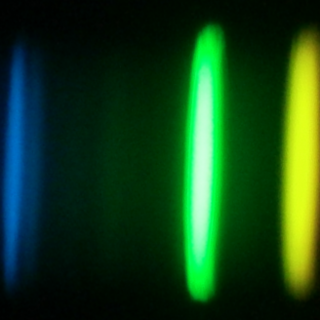Bibcode
Souto, D.; Unterborn, Cayman T.; Smith, Verne V.; Cunha, Katia; Teske, Johanna; Covey, Kevin; Rojas-Ayala, Bárbara; García-Hernández, D. A.; Stassun, Keivan; Zamora, O.; Masseron, T.; Johnson, J. A.; Majewski, Steven R.; Jönsson, Henrik; Gilhool, Steven; Blake, Cullen; Santana, Felipe
Bibliographical reference
The Astrophysical Journal Letters, Volume 860, Issue 1, article id. L15, 7 pp. (2018).
Advertised on:
6
2018
Citations
30
Refereed citations
30
Description
The first detailed chemical abundance analysis of the M-dwarf (M4.0)
exoplanet-hosting star Ross 128 is presented here, based upon
near-infrared (1.5–1.7 μm), high-resolution (R ∼ 22,500)
spectra from the SDSS Apache Point Galactic Evolution Experiment survey.
We determined precise atmospheric parameters T eff = 3231
± 100 K, log g = 4.96 ± 0.11 dex and chemical abundances
of eight elements (C, O, Mg, Al, K, Ca, Ti, and Fe), finding Ross 128 to
have near solar metallicity ([Fe/H] = +0.03 ± 0.09 dex). The
derived results were obtained via spectral synthesis (1D LTE) adopting
both MARCS and PHOENIX model atmospheres; stellar parameters and
chemical abundances derived from the different adopted models do not
show significant offsets. Mass–radius modeling of Ross 128b
indicates that it lies below the pure-rock composition curve, suggesting
that it contains a mixture of rock and iron, with the relative amounts
of each set by the ratio of Fe/Mg. If Ross 128b formed with a subsolar
Si abundance, and assuming the planet’s composition matches that
of the host star, it likely has a larger core size relative to the Earth
despite this producing a planet with a Si/Mg abundance ratio ∼34%
greater than the Sun. The derived planetary parameters—insolation
flux (S Earth = 1.79 ± 0.26) and equilibrium
temperature (T eq = 294 ± 10 K)—support previous
findings that Ross 128b is a temperate exoplanet in the inner edge of
the habitable zone.
Related projects

Nucleosynthesis and molecular processes in the late stages of Stellar Evolution
Low- to intermediate-mass (M < 8 solar masses, Ms) stars represent the majority of stars in the Cosmos. They finish their lives on the Asymptotic Giant Branch (AGB) - just before they form planetary nebulae (PNe) - where they experience complex nucleosynthetic and molecular processes. AGB stars are important contributors to the enrichment of the
Domingo Aníbal
García Hernández

Chemical Abundances in Stars
Stellar spectroscopy allows us to determine the properties and chemical compositions of stars. From this information for stars of different ages in the Milky Way, it is possible to reconstruct the chemical evolution of the Galaxy, as well as the origin of the elements heavier than boron, created mainly in stellar interiors. It is also possible to
Carlos
Allende Prieto